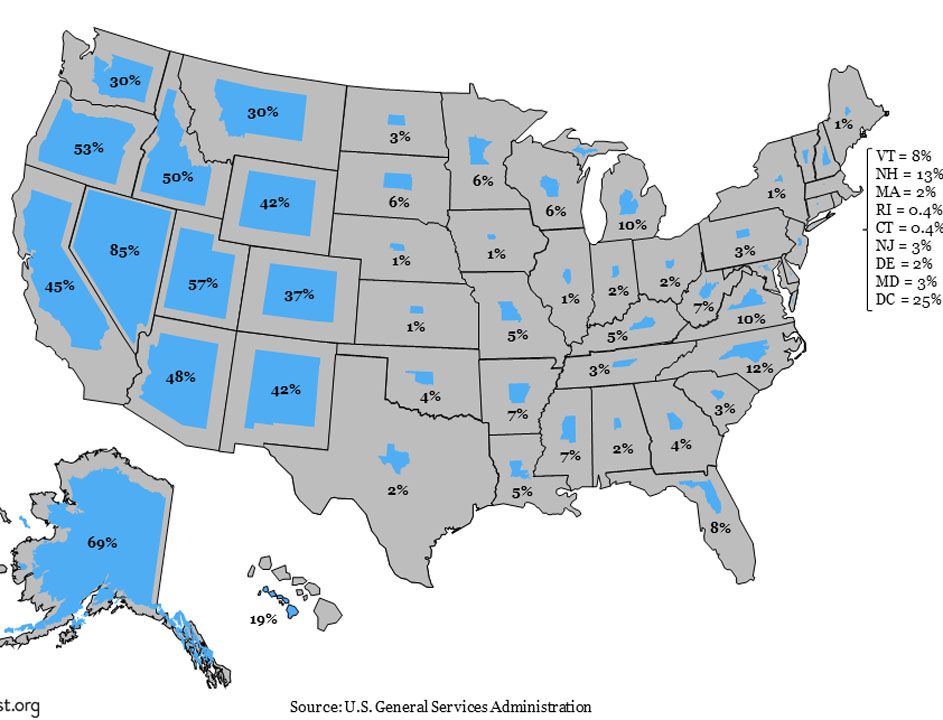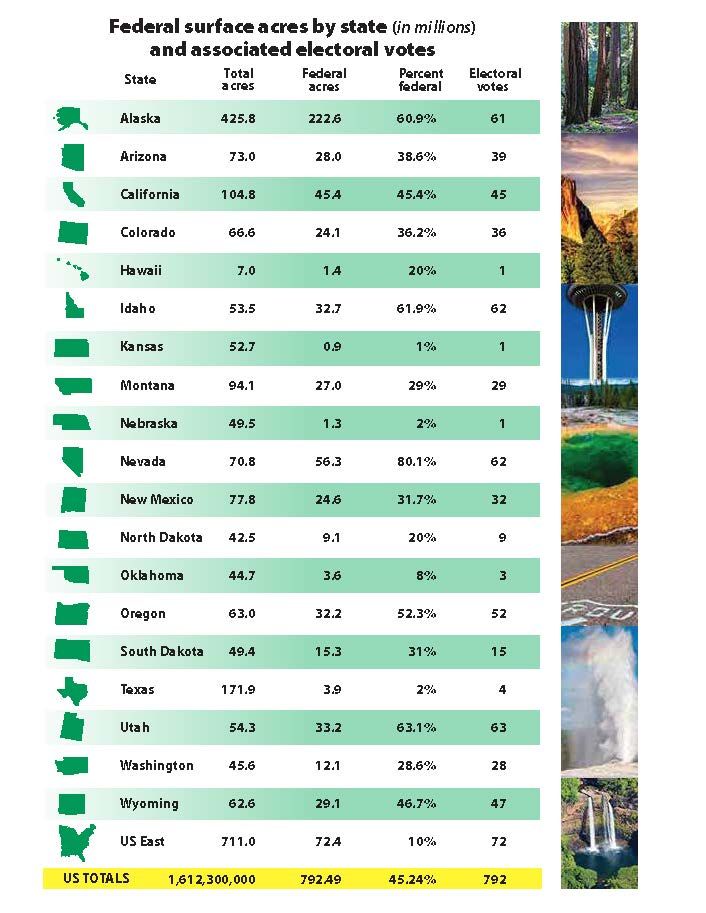Another Giant Gone: Gene Yahvah, 1926-2023
Gene Yahvah died in Libby, Montana on May 23, 2023, his ninety-seventh birthday. He was a legend among Montana foresters

We are again immersed in a lot of electoral commotion stemming from the fact that our states don’t have the same voting rules. Some states have strict voting guidelines. Others are very lax. COVID became an excuse to bend voting rules even further.
Our political parties have always played to their best advantages, but for voters the system seems to grow more chaotic with each election cycle. Gerrymandering and ballot boxes stuffed with the good wishes of the dearly departed invite both suspicion and voter anger.
We think we’ve come up with a better system.
How about assigning electoral votes by federal acreage within each state, not by population? That is 640 electoral votes - split between 50 states.
Why 640? Because the federal government owns 640 million acres in these United States. That’s a whopping 28 percent of our nation’s 2.27 billion acre land base. Surprised? So were we.
Evergreen's focus is generally on forestland - but when you look at all federal ownership of all public lands you will find our government also owns a lot of grassland and rangeland.

For skeptics, we’ve attached Federal Land Ownership and Data, a revealing 2020 report from the nonpartisan Congressional Research Service. Four federal agencies oversee 606.5 million acres. Ranked by size, they are the Bureau of Land Management, 244.4 million acres, the U.S. Forest Service, 192.9 million acres, the U.S. Fish and Wildlife Service, 89.2 million acres and the National Park Service, 79.9 million acres.
Ranked by state, Nevada is 80.1 percent federally owned - 56.3 million acres, while Connecticut and Iowa are only 0.3 percent federally owned with 9,110 and 97,509 acres, respectively.
Federal lands are concentrated in the western states. Utah is 63.1 percent federally owned - 3.2 million acres; Idaho is 61.9 percent federally owned - 32.7 million acres; Alaska is 60.9 percent federal - 222.66 million acres; Oregon is 52.3 percent federal - 32.2 million acres; Wyoming is 46.7 percent federal - 29.1 million acres; California is 45.4 percent federally owned - 45.4 million acres; Arizona is 38.6 percent federally owned - 28 million acres; Colorado is 36.2 percent federal - 24.1 million acres; New Mexico is 31.7 percent federally owned - 24.6 million acres; Montana is 29 percent federal - 27 million acres; Washington state is 28.6 percent federally owned - 12.1 million acres.
The underlying premise in our electoral college redo is this: the federal government does not pay property taxes in any of the states in which it owns land. Not one damned dime. So the states that hold the most federal land – which are all rural – remain beggars at the congressional door.
It isn’t a pretty picture, especially in rural western states that are still reeling from the collapse of the federal timber sale program 30 years ago. Western states do get “payments in lieu of taxes” and “secure rural schools” funding. In theory, the funds compensate for the presence of federal land. A pittance - compared to what the states and counties would collect if the feds paid property tax at the same rates private property owners pay.
States that hold millions of acres of federal land face serious economic and social hardship. Current federal land policies minimize the management and use of trillions of dollars held in timber, oil, natural gas and mineral resources. This discourages private investments in new businesses that could profitably convert these raw materials to consumer products in high demand.
Meantime, we justify importing these same resources from other nations. Many with few environmental laws or regulations. We have no problem with U.S. regulations, but the economic, social and cultural imbalances they create need to be corrected.

Our new electoral system would assign the most votes – 223 – to Alaska because it contains 223 million federal acres. By contrast, the 32 states that hold the least amount of federal land would share 32 electoral votes because they don’t have much skin in the federal game.
Rounding up to the next whole number, here are the electoral vote totals for the remaining states that hold the highest percentages of non-taxable federal acres: Utah, 63; Idaho, 62; Alaska, 61; Oregon, 52; Wyoming, 47; California, 45; Arizona, 39; Colorado, 36; New Mexico, 32; Montana 29 and Washington, 28.
We know our most populous states which - with the exception of California - hold little federal land within their borders, will complain loudly about losing control of the electoral college, but they are at least fortunate enough to not have the deadbeat federal government on their doorsteps. They are economic powerhouses with far greater control of their own destinies.

Of course, Congress could fix this inherent funding inequity by agreeing to pay property taxes at the same rates private landowners pay them to the counties in which their property resides.
We’re sure our proposal will never see the light of day, but we’d like to see President-elect Biden take this on. It is long past time for serious congressional action concerning the fundamental unfairness of a system that has impoverished rural states that shoulder the financial burdens that come with holding so much federal land within their borders.
You 100% tax-deductible subscription allows us to continue providing science-based forestry information with the goal of ensuring healthy forests forever.